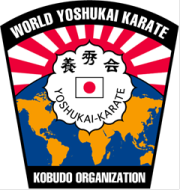Traditional Weapons
Kobudo means way of weapons. Yoshukai encompasses numerous weapons which were said to be an improvisation of farm implements converted into protective devices. Yoshukai Karate is widely known for its weaponry. Mastering the techniques of a great variety of martial arts weapons is required for advancing in rank
Nunchaku
Nunchaku means wooden flail. It was originally used as a rice thresher and consisted of two unequal lengths of hardwood connected by a cord made of horse hair. Modern nunchaku are constructed of lighter wood and the two sticks are of equal length. Nylon cords or lengths of chain have replaced the hair cords. The nunchaku can be wielded with tremendous velocity in striking and are also valuable in parrying attacks from other weapons.
Bo
Bo means staff and is a wooden pole approximately six feet long. Its original use, before becoming a martial arts weapons, was utilitarian. Peasants balanced heavy loads at each end of the bo and carried it across the shoulders.
Sai
Sai are a pair of pronged truncheon used defensively against the bo or the samurai sword. Its design stems from the concept of a pitchfork and was originally developed in Okinawa during the Japanese occupation of those islands.
Tonfa
Tonfa means handle and consists of two billets made of hardwood. A long handle is set about six inches from one end of each billet. it can be used to block or parry another weapon and can also be spun in circular motion to thrust or strike.
Kama
Kama are short handled sickles, also developed from Okinawan farm implements and used to combat the Samurai Sword.
Katana
The Katana or Samurai Sword is strictly an offensive weapon. Forging the blade was a religious act and the forging method was a closely guarded secret known only to a few Master Swordmakers. Those secrets have been passed down through the ages to those family members deemed worthy. Only a handful of these Master Craftsmen are practicing the art today.






